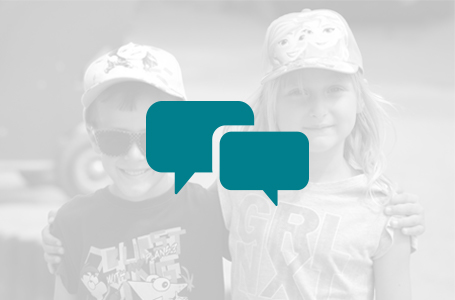
By Knellee Bisram - A certified Mindfulness Instructor, and Founder of AHAM Education Inc.
There has been a growing trend in the U.S. and across the globe to educate the “whole child”. The overwhelming evidence supporting the benefits of Social and Emotional Learning programs has contributed to greater acceptance of investing in afterschool, in-school and professional development workshops that focus on educating the heart and mind as a foundation for social, mental and emotional health.
According to the Collaborative for Academic, Social, and Emotional Learning (CASEL) Social and Emotional Learning (SEL) encompasses an array of practices, strategies and tools that enable individuals to strengthen self-awareness, self-management, social awareness, relationship skills, and responsible decision making. SEL Programs tend to incorporate mindfulness, emotional intelligence, and other social and mental skills, which are different from, but can complement, Positive Behavioral Intervention and Supports (PBIS).
As part of CASEL’s Collaborating District Initiative, eight of the larger and more diverse U.S. school districts have taken a leadership role in implementing robust evidence-based SEL programs to promote higher academic achievement, improve social/emotional skills, improve attitudes about self, others, and school, inspire positive classroom behavior, reduce risk of failure, lower conduct problems, and lessen emotional distress. Miami-Dade County recently supported an ongoing pilot initiative to offer Mindfulness Based Stress Reduction training to all MDC public school teachers.
Despite the clear neurological, cognitive and behavioral evidence supporting the need for youth to learn heart and mind skills alongside their abc’s, it continues to be challenging to fully integrate SEL district-and school-wide. Part of the problem is that SEL tends to be framed solely as a mental health issue relegated to second-tier status to academic skills.
It behooves those of us who are parents, educators, community leaders engaging in the SEL front to make the obvious but often forgotten bottom-line economic case to education administrators and local government officials. In the long term, the SEL positively impacts performance and human capacity, an important ingredient for productivity and employment and, by extension, Real Gross Domestic Product Growth.
Look no further than major corporations like Google, SAP, AIG, JPMorgan Chase and our own Miami Heat, who are investing in in-house Emotional Intelligence and Mindfulness Based Leadership and similar employee programs because they see clearly that it makes good “dollars and cents”. Business leaders got the memo - mental and emotional stability is perhaps the most important factor in peak performance and success. This is the same reason the Bhutan government has placed human happiness at the center of measuring economic growth by replacing Gross Domestic Product (GDP) with Gross National Happiness (GNH) as their country’s main indicator of economic and social wellbeing!
If we are truly preparing our youth to be productive contributors to the economy, SEL should be central to our educational strategy, not merely a supplement to academic learning. K-12 learning institutions can independently and progressively make this shift within their resource constraints. Here are some suggestions:
- Invest in staff/teachers – provide them with adequate and in-depth SEL training so they are equipped to embody and model mindful presence and emotional IQ in and out of the classroom
- Elevate SEL as part of the school culture – pause for 3 silent breaths as a school body together at the start and end of day, and between class periods over the PA system, build-in SEL modules into curriculum (PE, Social Studies, Health, Biology, Environmental Science); reward acts of kindness, replace detention with reflection/contemplative sessions, train students to be mindfulness/yoga peer facilitators for an afterschool club
- Create an SEL environment – dedicate a quiet room or space where teachers and youth can voluntarily have “Time-In” using a meditation or other awareness/reflection practice of their choosing
- Prioritize movement – physical activity promotes healthy academic, social and emotional development. Integrate a morning and afternoon recess, or dedicate a portion of lunch time to unstructured activity to allow youth (and teachers) to destress, have a sports day every quarter, offer yoga & Tai chi classes
- Engage parents – offer mindful parenting workshops or provide community and online resources for parents to cultivate SEL in the home and bolster school efforts
- Strategically measure impact – make use of evidence-based SEL survey instruments to document changes in performance, behavior and health to support requests for funding and buy-in from stakeholders.
Knellee Bisram is a Consultant, Certified Mindfulness Instructor and Founder of AHAM Education Inc., a social investment initiative empowering 1 million underserved individuals with evidence-based mindfulness and emotional resiliency tools in the Americas by 2025. Details at www.ahameducation.org.
